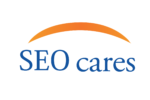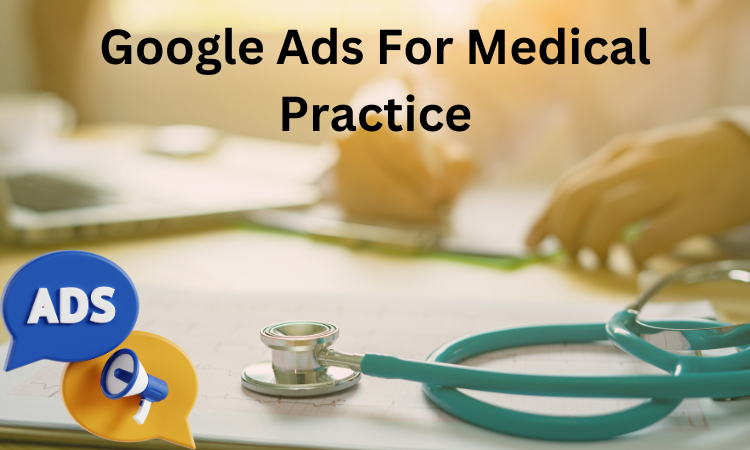In today’s competitive healthcare landscape, reaching the right patients at the right time is essential for growing your medical practice.
Google Ads offers a powerful way to connect with individuals actively searching for healthcare services in your area.
Whether you’re a family physician, specialist, or running a multi-provider clinic, Google Ads can help you increase visibility, attract new patients, and build trust within your community.
This guide will explore how to maximize the potential of Google Ads to grow your medical practice effectively.
How to Use Google Ads for Your Medical Practice?
Define Your Goals:
Before launching a Google Ads campaign for your medical practice, it’s crucial to clearly define your goals.
Knowing your goals will shape your strategy and help you track success effectively.
Common goals for medical practices include increasing patient appointments, promoting specific services, enhancing local visibility, or building brand awareness.
If your goal is to drive more appointments, focus on targeting keywords like “doctor near me” or “book a medical consultation.”
For practices offering specialized services, such as dermatology or physical therapy, emphasize those services in your ad copy and targeting.
If building trust and brand awareness is your priority, use display ads to highlight patient reviews, certifications, or facility images.
By setting clear goals, you can create campaigns tailored to meet specific objectives. This helps allocate your budget more effectively and ensures you reach the right audience.
Regularly track your progress using tools like Google Ads reports and Google Analytics to ensure your goals are being met.
Adjust your campaigns as needed to stay aligned with your objectives. A well-defined goal not only improves your campaign’s performance but also maximizes the return on investment for your medical practice.

Identify Your Target Audience:
To run a successful Google Ads campaign for your medical practice, it’s crucial to identify your target audience.
Identifying your target audience ensures your ads reach the right people at the right time, maximizing your ROI.
Start by considering the demographics of your ideal patients.
- Are they families, working professionals, or seniors?
- What is their location?
For example, a pediatrician might target parents in local neighborhoods, while a specialist may focus on patients within a wider area.
Use geographic targeting in Google Ads to reach people near your practice or in specific regions where you want to attract patients.
Next, think about their needs. Are they searching for routine checkups, specialized treatments, or urgent care?
Use keywords like “family doctor near me” or “orthopedic specialist” to align your ads with their search intent.
Behavioral targeting can also help you reach users based on their online activity, such as searching for health services.
Additionally, consider language and cultural preferences if your practice serves a diverse community. Creating personalized ads for specific groups can improve engagement.
By identifying your target audience, you can design highly relevant campaigns that attract the right patients, drive appointments, and grow your medical practice.
Choose Relevant Keywords:
Selecting the right keywords is a critical step in creating a successful Google Ads campaign for your medical practice.
Keywords are the terms potential patients use when searching for healthcare services, and targeting the most relevant ones ensures your ads reach the right audience.
Start by identifying keywords that match your services and patient needs. For general practices, keywords like “family doctor near me” or “primary care physician” are effective.
If you offer specialized services, include specific keywords such as “pediatrician,” “cardiologist in [city],” or “physical therapy clinic.”
Use Google’s Keyword Planner to find high-traffic, low-competition keywords and boost your campaign’s performance.
Don’t forget to include local keywords, especially if your goal is to attract patients from nearby areas.
For example, “dentist in [neighborhood]” or “urgent care near me” can help you connect with local searchers.
Incorporate negative keywords to avoid irrelevant traffic. For instance, exclude terms like “free consultation” if you don’t offer free services.
Use a combination of broad match, phrase match, and exact match keywords to achieve a balance between reach and accuracy.
Continuously monitor keyword performance and adjust as needed to improve results.
Choosing the right keywords ensures your ads appear to the right audience, driving more appointments and increasing ROI.

Create Location-Based Campaigns:
For a medical practice, reaching local patients is key to success, and location-based campaigns in Google Ads can help you connect with the right audience nearby.
By focusing on specific geographic areas, you can ensure your ads appear to people searching for healthcare services within your service area.
Start by using Google Ads’ location targeting to define your geographic focus. This could be a specific city, neighborhood, or a certain radius around your practice.
For example, a clinic in downtown Los Angeles can target users searching for “family doctor near me” within a 10-mile radius.
Location extensions are also helpful for displaying your address, making it easy for potential patients to find you on Google Maps.
Include local keywords in your ad copy, such as “trusted dentist in [city]” or “urgent care near [neighborhood].”
This keeps your ads relevant to local users. If your practice serves multiple areas, consider creating separate campaigns for each location.
Location-based campaigns allow you to focus your budget on the areas where your services are needed most.
By targeting local patients and optimizing your ads for location-specific searches, you can attract more qualified leads, increase appointments, and grow your medical practice.
Write Compelling Ad Copy:
Creating compelling ad copy is crucial for the success of your Google Ads campaign for a medical practice.
Well-written ads grab attention, build trust, and encourage potential patients to take action.
Start by focusing on your audience’s needs. Highlight how your services address their concerns, such as “Expert Care for Your Family’s Health” or “Same-Day Appointments for Urgent Care.”
Use clear, simple language that reassures patients and makes them feel confident in choosing your practice.
Include specific details that set you apart. Mention key services, certifications, or benefits like “Board-Certified Specialists,” “Walk-Ins Welcome,” or “State-of-the-Art Facilities.” Adding these details helps build trust and credibility.
Incorporate a strong call-to-action (CTA) to guide users on what to do next, such as “Book an Appointment Today” or “Call Now for a Consultation.”
Use ad extensions to include phone numbers, links to key services, or even patient reviews to make your ad more informative and appealing.
Make sure your ad copy matches the keywords you’re targeting. For example, if you’re bidding on “pediatrician near me,” mention pediatric care in your ad text.
Compelling, relevant ad copy increases click-through rates and helps drive more appointments to your medical practice.

Leverage Ad Extensions:
Ad extensions are a powerful feature in Google Ads that can enhance your medical practice’s campaigns by providing additional information and making your ads more engaging.
They improve visibility, increase click-through rates, and offer more ways for potential patients to interact with your practice.
A highly effective extension for medical practices is the call extension, enabling users to call your practice directly from the ad.
This is especially useful for patients looking to book appointments quickly. Location extensions are also valuable, as they display your address, phone number, and a link to directions on Google Maps, making it easier for local patients to find you.
Use sitelink extensions to guide users to specific pages on your website, such as “Book an Appointment,” “Our Services,” or “Meet the Doctors.”
This allows patients to easily access the information they need. Review extensions can showcase positive feedback or testimonials, building trust with potential patients.
Additionally, consider using structured snippet extensions to highlight key services like “Pediatric Care,” “Physical Therapy,” or “Chronic Disease Management.”
By leveraging ad extensions, you provide more value in your ads, improve engagement, and make it easier for patients to choose your medical practice over competitors.
Set a Budget and Bidding Strategy:
Setting a clear budget and choosing the right bidding strategy is essential for maximizing the effectiveness of your Google Ads campaign for your medical practice.
A well-defined budget ensures that you control costs while getting the best results.
Start by determining how much you are willing to spend each day or month on Google Ads.
For a medical practice, a daily budget is an effective way to track and adjust your spending.
You can start small and increase the budget as you see what works best. Make sure to consider the cost of competitive keywords, such as “doctor near me” or “urgent care,” which can have higher cost-per-click.
Next, choose a bidding strategy that aligns with your goals. Manual CPC gives you control over individual bids for any keyword, allowing you to adjust based on performance.
Maximize Clicks automatically sets your bids to help you get the most clicks within your budget, while Target CPA (Cost-Per-Acquisition) is useful if your goal is to generate appointments, as it focuses on driving conversions.
Regularly monitor the performance of your ads, and adjust your budget and bidding strategy as needed to ensure your ads are reaching the right audience effectively while staying within your financial limits.

Monitor and Optimize Campaigns:
To ensure the success of your Google Ads campaigns for your medical practice, it’s important to continuously monitor and optimize their performance.
Regular tracking allows you to identify areas for improvement and maximize your return on investment.
Begin by analyzing key metrics like click-through rate (CTR), conversion rate, and cost-per-click (CPC).
A low CTR may indicate that your ad copy or targeting needs improvement, while a low conversion rate could suggest issues with your landing pages or keyword relevance.
Monitoring these metrics helps you understand how your ads are performing and where changes are needed.
Use Google Ads’ built-in tools like A/B testing to experiment with different ad variations. Test different headlines, descriptions, or calls-to-action to see which performs best.
You can also adjust keyword targeting by adding new terms or excluding irrelevant ones based on search queries.
In addition, review your budget and bidding strategy. If you’re not getting enough impressions or clicks, you may need to increase your budget or adjust your bids.
Conversely, if you’re spending too much with little return, consider refining your targeting.
By regularly monitoring and optimizing your campaigns, you can improve performance, reduce costs, and drive more qualified patients to your medical practice.
Focus on Compliance:
When using Google Ads for your medical practice, compliance with healthcare advertising regulations is crucial.
The healthcare industry is heavily regulated, and failure to comply with legal requirements can result in penalties or even account suspension.
Adherence to advertising standards not only ensures legal safety but also builds trust with potential patients.
Start by familiarizing yourself with the Google Ads policies specific to healthcare and medicine.
Google has strict rules about advertising medical services, particularly around sensitive topics such as pharmaceuticals, treatments, and medical procedures.
Make sure your ad copy, landing pages, and targeting adhere to these guidelines.
For instance, avoid making unrealistic claims or offering misleading information about the outcomes of treatments.
Additionally, ensure that your practice’s website is secure, HIPAA-compliant, and offers clear, truthful information.
Using disclaimers, such as “results may vary,” is important if you’re advertising medical services.

Create Service-Specific Campaigns:
Creating service-specific campaigns in Google Ads allows you to target potential patients searching for particular medical services.
Instead of using generic keywords, focus on terms related to specific treatments, such as “pediatric care” or “dental implants.”
This approach makes your ads more relevant to users and improves the chances of attracting qualified leads.
Tailor your ad copy to highlight the benefits and unique features of each service, ensuring potential patients know exactly what you offer.
This targeted strategy helps increase conversion rates and maximize ad spend.
Focus on Mobile Users:
With many patients searching for healthcare services on their mobile devices, it’s essential to optimize your Google Ads campaigns for mobile users.
Ensure your ads are mobile-friendly, with concise, clear messaging and fast-loading landing pages.
Use call extensions to allow users to easily contact your practice with a single tap. Consider location targeting to reach people nearby who may need immediate care.
By focusing on mobile users, you can capture on-the-go patients and improve the chances of driving more appointments and conversions.

Utilize Video Ads:
Video ads can be a powerful tool for your medical practice, allowing you to engage potential patients visually.
Create short, informative videos that showcase your services, introduce your medical staff, or provide patient testimonials.
You can target these video ads to users on YouTube or the Google Display Network, increasing brand awareness and trust.
Video ads help humanize your practice and make it more approachable, encouraging viewers to take the next step in scheduling an appointment.
This strategy can be especially effective for building long-term relationships with patients.
Implement Call-Only Ads:
Call-only ads are a great way to drive phone calls directly to your medical practice.
These ads are designed specifically for mobile users, allowing them to call your practice with just one click.
This is ideal for patients looking to book appointments or ask urgent questions. Make sure your phone number is prominently displayed in the ad, and include a compelling call-to-action like “Call Now for an Appointment.”
Call-only ads help you capture high-intent leads and provide a direct, easy way for potential patients to reach you.
Schedule Ads for Peak Hours:
Scheduling your Google Ads to run during peak hours is an effective way to maximize your ad spend.
Identify the times when potential patients are most likely to search for medical services, such as early mornings, evenings, or weekends.
Adjust your campaign settings to ensure your ads appear during these high-traffic periods, increasing the chances of capturing valuable leads.
By targeting peak hours, you can optimize your budget and ensure your ads reach patients when they’re most likely to take action, such as scheduling an appointment.

Leverage Google My Business Integration:
Linking Google Ads with your Google My Business (GMB) account enhances local visibility.
By linking the two, your ads can display your practice’s address, phone number, and directions, making it easier for potential patients to find you.
Location extensions in Google Ads pull details from GMB, providing accurate, up-to-date information.
This integration boosts your ad’s credibility, especially for local searches like “doctor near me” or “urgent care in [city].”
It helps drive more calls, visits, and appointments, ensuring your practice stands out to nearby patients.
Target Emergency Searches:
Targeting emergency searches can help your medical practice capture high-intent patients in urgent situations.
Use keywords like “emergency dentist near me” or “urgent care near me” to reach people seeking immediate medical attention.
Create ads that highlight your practice’s ability to handle emergencies, offering quick responses and availability.
By bidding on these emergency-related keywords, you can ensure your practice appears when people are actively searching for urgent medical care, increasing the likelihood of immediate appointments and building trust with patients in critical need.

Track Conversions with Google Tag Manager:
Google Tag Manager (GTM) allows you to easily track conversions from your Google Ads campaigns.
By setting up conversion tags through GTM, you can monitor actions like form submissions, phone calls, or appointment bookings on your website.
This data helps you assess the effectiveness of your ads and optimize your campaigns for better performance.
Tracking conversions ensures that you’re spending your budget wisely by focusing on ads and keywords that drive tangible results, such as new patients scheduling appointments with your practice.
Use AI-Powered Recommendations:
AI-powered recommendations from Google Ads can help optimize your campaigns.
These suggestions, driven by your campaign data and industry trends, offer actionable insights to enhance performance.
For example, Google’s AI may recommend adjusting bids, refining targeting, or adding new keywords.
By following these recommendations, you can enhance the relevance of your ads, reach more potential patients, and improve your ROI.
Using AI-powered suggestions ensures that your campaigns stay competitive and efficient, making the most of your advertising budget.

Promote Seasonal Services:
Using Google Ads is an effective way to promote seasonal services for your medical practice
Whether it’s flu shots in the fall, allergy treatments in the spring, or wellness check-ups in the summer, target seasonal keywords to reach patients at the right time.
Tailor your ad copy to highlight these services, emphasizing their relevance during specific seasons.
By aligning your ads with seasonal needs, you can drive more traffic to your practice, increase appointments, and ensure that patients are aware of timely services that may be in demand.
Analyze Competitor Campaigns:
Analyzing competitor campaigns can provide valuable insights for improving your own Google Ads strategy.
Use tools like the Auction Insights report in Google Ads to see how your ads perform compared to competitors.
Look at their ad copy, keywords, and bidding strategies to understand what’s working for them.
By identifying gaps in their approach or opportunities to differentiate, you can refine your ads, target underserved areas, and attract more patients.
Keeping an eye on competitors helps you stay competitive and optimize your campaigns for better results.

A/B Test Ad Elements:
A/B testing is essential for optimizing your Google Ads campaigns. Experiment with different ad elements like headlines, descriptions, calls-to-action, and display URLs to determine which combinations deliver the best results.
For example, try different offers, like “Book an Appointment Now” vs. “Get a Free Consultation,” to identify which resonates more with potential patients.
By consistently testing and refining these elements, you can improve your click-through rates and conversions, ensuring that your ads are as effective as possible in driving new patients to your medical practice.
Sum up:
Google Ads is a powerful tool for medical practices to increase visibility, attract new patients, and grow their business.
By targeting specific keywords related to healthcare services and local areas, you can reach people actively searching for medical help.
Effective use of Google Ads involves creating clear, compelling ads, optimizing landing pages, and continuously tracking and refining campaigns for better results.
With the right strategy, Google Ads can help your medical practice connect with potential patients and stand out in a competitive market.
Most Asked Questions:
How to Target Doctors on Google Ads?
Targeting doctors on Google Ads calls for a strategic approach:
- Use Specific Keywords: Focus on industry-relevant terms like “medical supplies,” “continuing medical education,” or “healthcare software.”
- Leverage Location Targeting: If targeting doctors in a particular area, narrow the geographic radius.
- Target Professional Interests: Use audience targeting to reach individuals with healthcare or medical industry interests.
- Utilize LinkedIn for Integration: Combine Google Ads with LinkedIn campaigns to retarget medical professionals.
- Offer Professional Content: Create ads promoting whitepapers, webinars, or conferences tailored for doctors.
What Are the Best Practices for Google Ads?
To maximize the effectiveness of your campaigns:
- Define Clear Goals: Know whether you’re aiming for leads, website traffic, or sales.
- Research and Use Relevant Keywords: Perform thorough keyword research to match user intent.
- Craft Compelling Ad Copy: Use clear language, include benefits, and add strong CTAs.
- Optimize Landing Pages: Ensure the landing page aligns with the ad and provides a seamless user experience.
- Utilize Ad Extensions: Include sitelinks, call extensions, and location extensions to enhance visibility.
- Monitor and Adjust: Regularly review performance metrics and refine campaigns to improve results.
- A/B Test: Test variations of your ads to see which performs better.
- Set a Budget and Bidding Strategy: Allocate your budget wisely and choose the right bidding approach based on your goals.
Is Google Ads Really Profitable?
Yes, Google Ads can be highly profitable if managed correctly. Its profitability depends on:
- Targeting the Right Audience: Ensures your ads reach users with a high intent to convert.
- Optimizing Campaigns: Regularly monitor performance and adjust keywords, bids, and ad copy.
- Measuring ROI: Use tools like Google Analytics to track conversions and assess the effectiveness of your campaigns.
- Industry and Competition: The level of competition in your niche can impact costs and profitability.
- Clear Strategy: A well-defined strategy ensures you’re not wasting budget on irrelevant clicks.
Businesses that consistently refine their approach and focus on ROI often see significant returns from Google Ads.
How to Use Google Ads for Interior Design?
To advertise your interior design business with Google Ads:
- Identify Your Target Audience: Focus on homeowners, businesses, or specific demographics interested in design services.
- Choose Relevant Keywords: Use terms like “modern interior design,” “luxury home design,” or “office interior decoration.”
- Use Visual Display Ads: Showcase your work with images or videos to attract visually-driven audiences.
- Focus on Local Campaigns: Target specific geographic locations where your services are offered.
- Highlight Unique Selling Points: Emphasize benefits like personalized consultations or eco-friendly designs.
- Leverage Retargeting: Reach out to users who visited your site but didn’t book a consultation.
- Optimize Landing Pages: Create pages tailored to specific services, like “Living Room Design” or “Corporate Spaces.”
Track Metrics: Monitor key metrics such as CTR, CPC, and conversions to adjust your campaigns for better performance.
Related posts:
Tips to Use Google Ads for Moving Companies

